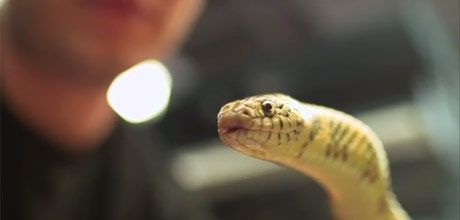The ancestor of snakes and lizards likely gave birth to live young, rather than laid eggs, according to new findings from a George Washington University researcher. Moreover, the species have switched back and forth in their preferred reproductive mode over time.
“Before, researchers long assumed that the ancestor of snakes and lizards laid eggs, and that if a species switched to live birth, it never reverted back. We found this wasn’t the case,” said Alex Pyron, Robert F. Griggs Assistant Professor of Biology in the Columbian College of Arts and Sciences. His research was published in Ecology Letters this month.
His discovery pushes researchers’ understanding of the evolution of live birth a lot further back in time, to 175 million years ago, showing that it has a much more ancient past as a strategy than previously believed. These conclusions are backed by several recent plesiosaur and mosasaur fossil discoveries as well as the fossil record of a few lizards from the Cretaceous Period—around 65 million years ago—which had embryos in the mother and had live birth.
Dr. Pyron analyzed an evolutionary tree containing all groups of squamates—the group that comprises lizards and snakes—which he and a team of researchers published in the journal BMC Evolutionary Biology earlier this year.
The tree, which uses DNA sequencing technology to group thousands of lizards and snakes, includes all families and subfamilies and most genus and species groups.
In total, about 115 groups of lizards and snakes, or about 2,000 species, have live birth. The other 8,000 species lay eggs—at least right now.


